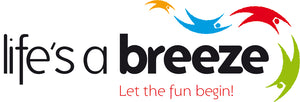
Introduction
This tent guide produced by Life’s a breeze GB Ltd, will give you the understanding and knowledge before purchasing a tent.
Overview
Tents are a great way to explore the great outdoors with family and friends. They cater for all kind of budgets but you must remember that quality doesn’t always mean a cheap price.
There are five basic types of tents on the market today which Life’s a breeze stock: Backpacking/Hiking Tents, Family Tents, Inflatable Tents, Bell Tents & Teepee/Tipi, though you’ll find many variations on all five variations.
Choosing a tent is not complicated as long as you know what roughly you want. You’ll need to decide how many people you want it to sleep how many rooms
Types of Tents

Backpacking/Hiking tents allow you to venture away from crowded summer campsites and out into the back of beyond. These tents will be smaller in size to reduce weight and pack size, making them ideal to carry with your rucksack. Designs are normally tunnel or geodesic shape, allowing the best in wind resistance, rigidity and stability in open areas such as fields.

These tents can also come with optional accessories including porches, tent carpets and footprints, to add extra space and comfort.

This type of tent is becoming more and more popular with families and weekend campers alike. The beams are sturdy like a standard tent pole, but without the danger of them snapping!

The multiple sizes of bell tents can be suited to their use or preference and most have a spacious interior, with room to sleep a number of people.

The 3 types of Tent Pole
Fibre Glass Tent PolesFibre glass poles are the standard tent poles many will be used to. These poles are flexible, and split into sections held together with elastic. These poles are lightweight, but can split/snap when put under significant pressure. The pole will bend, but if bent too far will snap, so if you can feel the strain on the pole when pitching your tent, check that you are pitching correctly to prevent a pole break. Replacement poles can be purchased but may need to be cut to the size of your tent.
Steel Tent PolesTents with steel poles often come with a slightly higher cost, and will weigh more. These poles are generally used on some large family tents to add extra stability and strength.
InflatableNew to the tent pole market is to have a tent with no poles at all. Instead of poles, the tent has sleeves or beams which can be inflated with a foot pump, creating a rigid inflated beam that holds up much stronger than you might think. Inflatable poles offer a great alternative to standard poles, and make for a much faster/less complex pitching.
Tent Accessories

Pegs may be included with your tent, however, depending on where you are pitching your tent you may need different pegs. There are pegs that designed to go into the soft ground like sand, or hard ground. You can also have practical glow in the dark pegs that prevent you and others from tripping over at night.
A tent footprint will protect your groundsheet from mud, moisture and abrasion. Many tents have footprints designed specifically for their shape and size; although generic versions are available too.

A little bit of luxury to make your tent a real home away from home, the tent carpet is another great insulator that will keep the warmth inside the tent and prevent the tent floor being colder under foot. It may seem a little more glamour camping than some people like, but for longer holidays a carpet can certainly make the experience more comfortable.
Windbreaks are an essential accessory to have in your caravan or camping gear. They will help you shelter from the breeze and keep your privacy on the campsite, beach or wherever you decide to pitch. No more struggling with the wind blowing out your stove!

There are many different options for lighting but the most common for tents are hanging lanterns. A loop or clip in the tent where you can hang your lantern or torch. Some tents include a cable tidy to keep wires tucked away.








